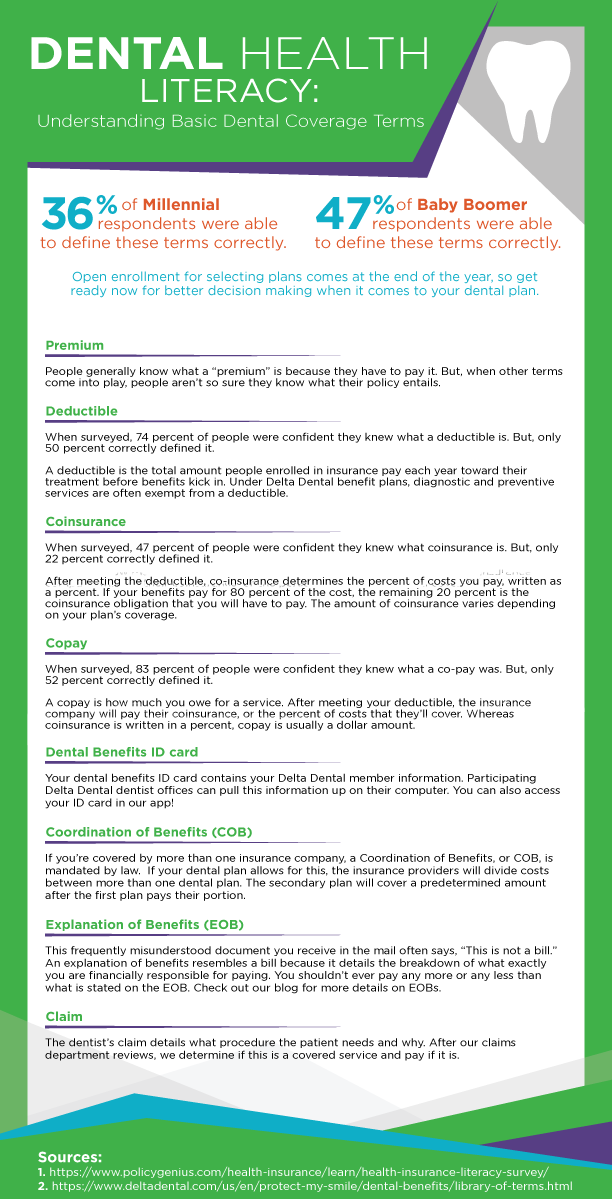Dental Health Literacy Pamphlet for Employees | Basic Dental Coverage Terms
Ensure your employees understand their insurance policies and know how to make the most of them with this handy infographic:
36 percent of Millennial respondents were able to define these terms correctly, whereas 47 percent of Baby Boomer respondents answered correctly. Open enrollment for selecting plans comes at the end of the year, so get up to speed on the terminology in your dental plan today.
Premium
People generally know what a “premium” is because they have to pay it. But, when other terms come into play, people aren’t so sure they know what their policy entails.
Deductible
When surveyed, 74 percent of people were confident they knew what a deductible was. But, only 50 percent correctly defined it.
A deductible is the total amount people enrolled in insurance pay each year toward their treatment before benefits kick in. Under Delta Dental benefit plans, diagnostic and preventive services are often exempt from a deductible.
Coinsurance
When surveyed, 47 percent of people were confident they knew what coinsurance is. But, only 22 percent correctly defined it.
After meeting the deductible, co-insurance determines the percent of costs you pay, written as a percent. If your benefits pay for 80 percent of the cost, the remaining 20 percent is the coinsurance obligation that you will have to pay. This is a characteristic of indemnity insurance, POS, and PPO plans. The amount of coinsurance varies depending on your plan’s coverage.
Copay
When surveyed, 83 percent of people were confident they knew what a co-pay was. But, only 52 percent correctly defined it.
A copay is how much you owe for a service. After meeting your deductible, the insurance company will pay their coinsurance, or the percent of costs that they’ll cover. Whereas coinsurance is written in a percent, copay is usually a dollar amount.
Dental Benefits ID Card
Your dental benefits ID card contains your Delta Dental member information. Participating Delta Dental dentist offices can pull this information up on their computer. You can also access your ID card in our app!
Coordination of Benefits (COB)
If you’re covered by more than one insurance company, a Coordination of Benefits or COB, is mandated by law. If your dental plan allows for this, the insurance providers will divide costs between more than one dental plan. The secondary plan will cover a predetermined amount after the first plan pays their portion.
Explanation of Benefits (EOB)
This frequently misunderstood document you receive in the mail often says, “This is not a bill.” An explanation of benefits resembles a bill because it details the breakdown of what exactly you are financially responsible for paying. You shouldn’t ever pay any more or any less than what is stated on the EOB. Check out this article for more details on EOBs.
Claim
The dentist’s claim details what procedure the patient needs and why. After our claims department reviews, we determine if this is a covered service and pay if it is.

